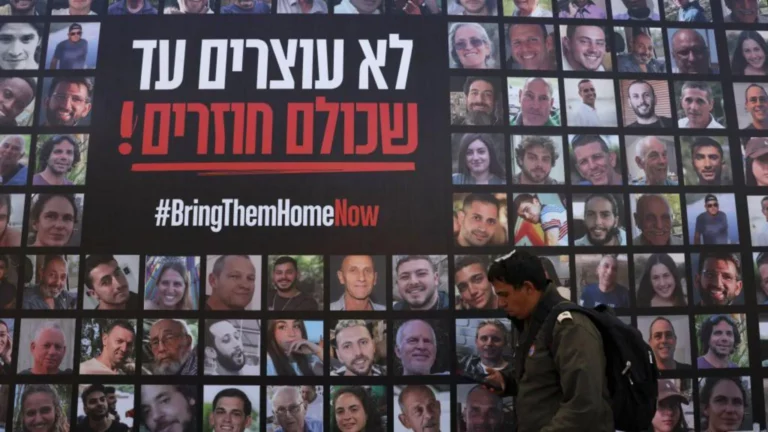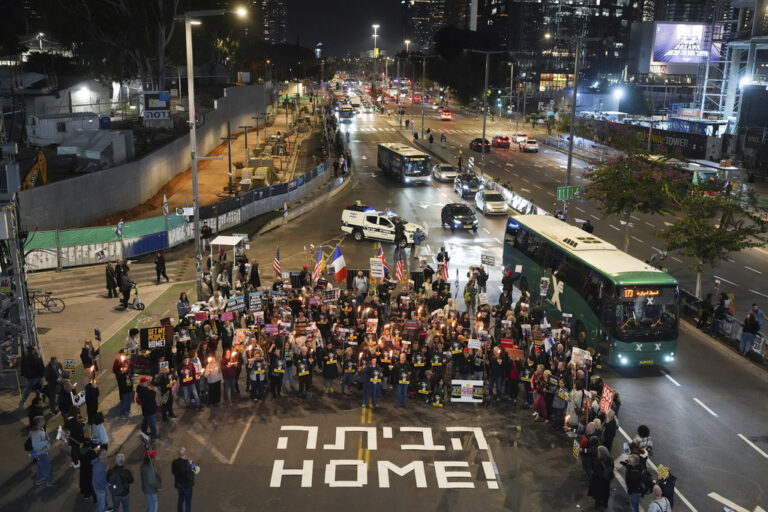 Rabbi Yissachar Dov Krakowski is Rov of Kehilas Torah Ve’Chesed in Yerushalayim’s Nachlaot Neighborhood. Rabbi Krakowski also serves as a Rabbinical representative for OU Kashrus in Israel. Rabbi Krakowski has been mishamesh many Rabbanim and Poskim both In America and in Eretz-Yisroel. Rabbi Krakowski started his Yeshiva years in Beis Hamedrash and Mesivta of Baltimore. He Then continued in Yeshivas Shaar HaTorah Grodna (Queens NY), South Fallsburg, Brisk (Yerushalayim), and currently still learns in Kollel Nachlos Elazar (Yerushalayim). Rabbi Krakowski can be reached at: [email protected]
Rabbi Yissachar Dov Krakowski is Rov of Kehilas Torah Ve’Chesed in Yerushalayim’s Nachlaot Neighborhood. Rabbi Krakowski also serves as a Rabbinical representative for OU Kashrus in Israel. Rabbi Krakowski has been mishamesh many Rabbanim and Poskim both In America and in Eretz-Yisroel. Rabbi Krakowski started his Yeshiva years in Beis Hamedrash and Mesivta of Baltimore. He Then continued in Yeshivas Shaar HaTorah Grodna (Queens NY), South Fallsburg, Brisk (Yerushalayim), and currently still learns in Kollel Nachlos Elazar (Yerushalayim). Rabbi Krakowski can be reached at: [email protected]
The following is meant as a convenient review of Halachos pertaining to Shavuos. The Piskei Din for the most part are based purely on the Sugyos, Shulchan Aruch and Ramah, and the Mishna Berura, unless stated otherwise. They are based on my understanding of the aforementioned texts through the teachings of my Rebeim. As individual circumstances are often important in determining the psak in specific cases, and as there may be different approaches to some of the issues, one should always check with one’s Rov first.
Shavuos Night:
- On Shavuos Night one should wait for nightfall to daven Maariv.
- The reason for this is to ensure that the 50 days of Sfiras Haomer are complete.
- There are those who are makpid to wait until nightfall according to Rabeinu Tam (72 minutes after sunset) etc. Many only wait until calendar (number of minutes after sunset may vary depending on location) nightfall even if they are makpid on Rabeinu Tam for Motzei Shabbos.
- The reason for this is to ensure that the 50 days of Sfiras Haomer are complete.
- Kiddush Lel-Shavuos is the regular Yom-Tov Kiddush, including Shehechiyanu (in Chutz LaAretz both days).
- The Seuda Lel-Shavuos is a regular Yom-Tov Seuda.
- As it is more important to eat meat Shavuos day there are those that are Noheg to eat their “dairy Seuda” Lel Shavuos.
- Most eat a regular Yom-Tov meat meal.
- As it is more important to eat meat Shavuos day there are those that are Noheg to eat their “dairy Seuda” Lel Shavuos.
- There is a minhag to stay up LEARNING Lel-Shavuos until sunrise, and to Daven with sunrise.
-
- There are those who go to sleep and wake up before Sunrise in order to learn a little, and at least to daven with the Sunrise.
- The Minhag of staying Lel-Shavuos is based on the idea that we are trying to make up for the fact that Klal-Yisroel slept on the day of Kabbolas HaTorah. If this is the case, Davening Neitz (with Sunrise) would also be a way to compensate for that earlier failure.
- There is a minhag amongst some of the Chasidim to stay up all night learning, but to go to sleep at dawn. Then they daven Shacharis at a regular time.
- This minhag is also attempting to fix the same mishap of Klal-Yisroel sleeping late, but there is a fear that if one davens Shacharis after an all nighter one will be sleepy and not daven properly.
- There are those who go to sleep and wake up before Sunrise in order to learn a little, and at least to daven with the Sunrise.
-
-
- There are varying Minhagim as to what a person should learn on Lel-Shavuos:
-
-
- One of these consists of the traditional Tikun Lel Shavuos. The Tikun is made up of beginnings and ends of the Sifrei Tanach and parts of Torah She Baal Peh. It’s supposed to serve as an “abridged version” of the “entire Torah”.
-
-
-
- Another approach is the more Yeshiva oriented style of having a Seder in Gemarah Lel-Shavuos. The argument is made that however traditional the Tikun is, it still isn’t “real” learning as a person isn’t necessarily working towards understanding material, and a person is unlikely to retain much from it.
- Yet another option is Shiurim and ‘learn what you want’ style learning. Due to the late hours and the lack of sleep some people prefer to listen to a good speaker, or to read Torah that they find particularly interesting.
- If one follows the minhag of doing the Tikun, one should not deviate from it unless one feels that Shavuos will be more meaningful and fulfilling by switching to some other learning formula. When one doesn’t have a particular minhag, one should choose the learning approach that is the most productive for that particular individual.
-
Birchos Hashachar after staying up all night:
- Tzitzis: There is some disagreement as to whether someone wearing daytime clothing at night is obligated in Tzitzis or not. Therefore we wear our tzitzis throughout the night if we are staying up all night (in daytime garb). Since we don’t take off our tzitzis, and as we may have had the obligation of wearing tzitzis the whole time we don’t make a Brocho on tzitzis in the morning. Consequently, one should have in mind when making the Brocho on the Tallis to be motzi the tzitzis as well.
- Someone who doesn’t wear a Tallis should ask someone who does to say the Brocho on Tallis out loud and to be motzi them as well (for their tzitzis/taalis katan).
- Birchas HaTorah: many Poskim maintain that someone who stays up the whole night learning (unless they slept a half hour) should not say Birchas HaTorah.
- It is best to hear Birchas HaTorah from someone who did sleep
- When one is being Yotzei birchas HaTorah from someone else, that person should say/learn (or at least listen to someone learning) something (psukim and Torah SheBaal Peh) right after hearing the brochos.
- If someone doesn’t have the opportunity to hear Birchas HaTorah from someone who slept he should have in mind by birchas Ahava Raba/Ahavas Olam (of Shacharis) to be Yotzei with that blessing his obligation of Birchas HaTorah.
- As soon as he finishes Shacharis he should say/learn some psukim and some Torah SheBaal Peh.
- It is also advisable to try to have one of the olim L’Torah to have in mind to be motzi you in their Birchas HaTorah on the Torah reading (you should then be Yotzei your psukim with the laining, and between the Aliyos you should learn some Torah SheBaal Peh).
- As soon as he finishes Shacharis he should say/learn some psukim and some Torah SheBaal Peh.
- It is best to hear Birchas HaTorah from someone who did sleep
- Al Netilas Yadayim and Asher Yotzar: Whether someone who stayed up the whole night should make these brachos it is a matter of debate. In such a situation, it is therefore preferable for one to first use the facilities and then wash one’s hands and make these brachos.
- The rest of Birchos Hashachar: it seems to be the consensus of the Poskim that Birchas Elokai Neshama and Hamaavir should not be recited by someone who didn’t sleep. Therefore these brachos should ideally be heard from someone who slept, and otherwise they should be omitted (if someone didn’t hear Hamaavir from someone who hadn’t slept it could be that they may make the Brocho after napping during morning hours – one should ask one’s own Rov).
- The rest of Birchos Hashachar can be recited even if a person didn’t sleep at all.
- As there are minority opinions that even many of the other birchas Hashachar should not be recited by someone who didn’t sleep the minhag in many places has become to be Yotzei even the rest of the brachos from someone who slept.
- There are many opinions that it is still best to say the rest of the Brachos oneself.
- Either way – Yesh Al Mi Lismoch.
- There are many opinions that it is still best to say the rest of the Brachos oneself.
- As there are minority opinions that even many of the other birchas Hashachar should not be recited by someone who didn’t sleep the minhag in many places has become to be Yotzei even the rest of the brachos from someone who slept.
- The rest of Birchos Hashachar can be recited even if a person didn’t sleep at all.
Seudas Shavuos:
- There is a minhag to eat dairy on Shavuos day.
- Some are Noheg to wash, to have dairy, then to drink something Parve and eat a Parve solid, and then eat meat all in the same meal.
- There are those that have dairy meals Lel-Shavuos and not Shavuos day.
- There are those who have two separate Seudos on Shavuos day – Dairy and meat.
- There are those who have a dairy Kiddush, and then have a meat meal.
- The main factor to keep in mind is that in however one arranges for eating dairy, one should have a meat meal at some point during Shavuos day.
- People must also be careful (especially when having dairy and meat in the same meal) to keep full and complete separation between the two.
- It is important to keep in mind that after eating hard cheese it is not sufficient to merely rinse out one’s mouth and to eat a Parve item, but one must actually wait (in a similar fashion as between meat and dairy) before being able to consume meat.
- Just as on any other Yom-Tov, one should drink at least a little bit of wine.
- This sheet was prepared Líloy nishmas R’ Dovid Ben R’ Menachem Z”L Niftar 3 Sivan 5743 ת.נ.צ.ב.ה











2 Responses
You state: “There are those who go to sleep and wake up before Sunrise in order to learn a little, and at least to daven with the Sunrise.”
What is the iyan to daven with the netz on shavuos? I thought the iyan was to learn all night (litvaks) or to say tikun (chasidim). What is the makor or reason of davening early?
other question: I have seen many men who have stayed up all night and when they daven at the netz, they fall asleep. Would it not be better to go home at the netz and then get up to daven refreshed with a regular minyan?
I go to sleep around midnight and wake up at a normal time for normal davening. If I sleep less than 8 hours, I’m in trouble and fall asleep during the day. As it happens, I need to sleep a lot and if I don’t go to sleep until 3 or 4 AM, I’ll be davening shacharis beyechidus just before chatzos.